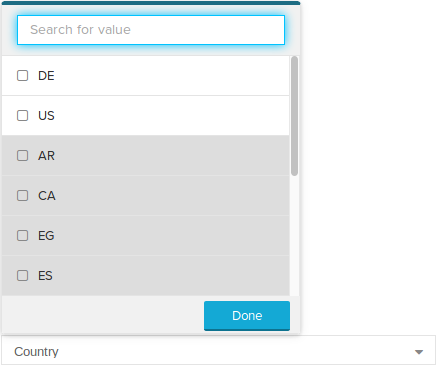Description
Filters can be defined as Analysis filters, Sheet filters or Component filters. If a query is sent to Celonis, all active filters are propagated to the input table(s). Multiple filters on a table are merged together by a logical AND.
Filters are applied to the input tables before the actual query. If the filter expression evaluates to false for a row of the input table(s), this row is excluded before the query is applied.
Comparison against NULL
Applying a filter which compares a column against null or not null always returns an empty result. To filter on all not null values use the ISNULL function. The reasoning behind it is the same as in the previous example. Null represents an unknown value. Celonis can not be sure if two unknown values are not the same.
Syntax
FILTER [FORCED] condition;
Forced Filter
If a regular filter is set as a sheet or component filter, the affected Dropdown and Button Dropdown components still show all available values. If only those values which respect the filter should be displayed and selectable, a forced filter can be used. Analysis filters are forced by default.
Example
Dropdown component using this regular sheet or component filter:
FILTER "Table"."Country" IN ('DE','US');
All values are available in the dropdown menu. Values which do not match the filter condition are displayed in gray color.
Dropdown component using this forced sheet or component filter:
FILTER FORCED "Table"."Country" IN ('DE','US');
Only values which match the filter condition are available.
Examples
Filter
FILTER "Numbers"."number" != 22
Column1
"Numbers"."id"
Column2
"Numbers"."number"
Filter
FILTER "Numbers"."number" IN (13, 34)
Column1
"Numbers"."id"
Column2
"Numbers"."number"
Filter
FILTER "Numbers"."number" IN (13, 34)
Filter
FILTER "Numbers"."id" IN (2, 3)
Column1
"Numbers"."id"
Column2
"Numbers"."number"
Filter
FILTER "Numbers"."number" IN (13, 34)
Column1
SUM("Numbers"."number")
Filter
FILTER "Numbers"."number" NOT IN (13, 34)
Filter
FILTER "Numbers"."id" = 1
Column1
"Numbers"."id"
Column2
"Numbers"."number"
Filter
FILTER "companyDetail"."country" = 'DE'
Column1
"caseTable"."caseId"
Result
| Column1 : INT |
|---|
1 |
2 |
3 |
4 |
Filter
FILTER "caseTable"."value" > 300
Column1
"caseTable"."caseId"
Column2
"companyDetail"."country"
Filter
FILTER Table1.Column1 = null
Column1
Table1.Column1
Filter
FILTER Table1.Column1 != null
Column1
Table1.Column1

